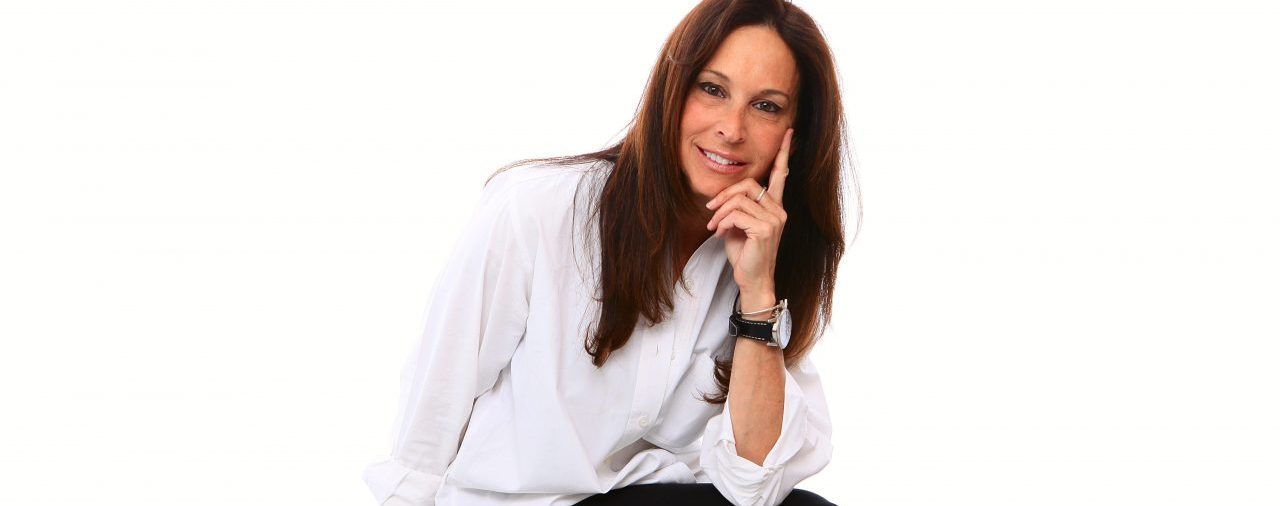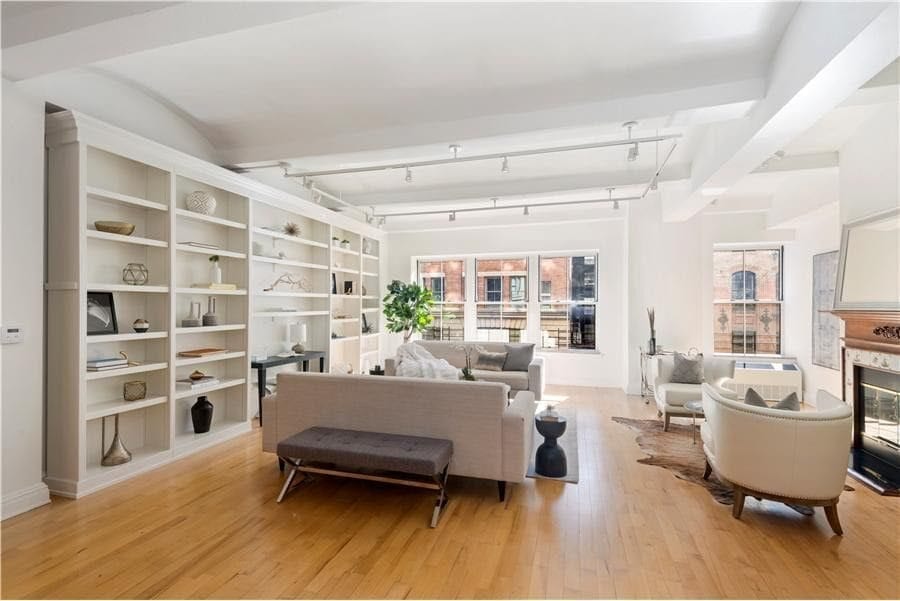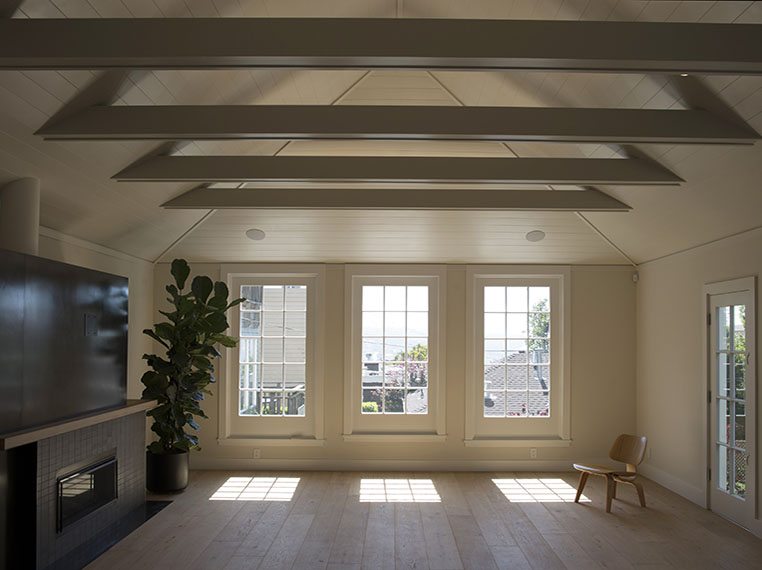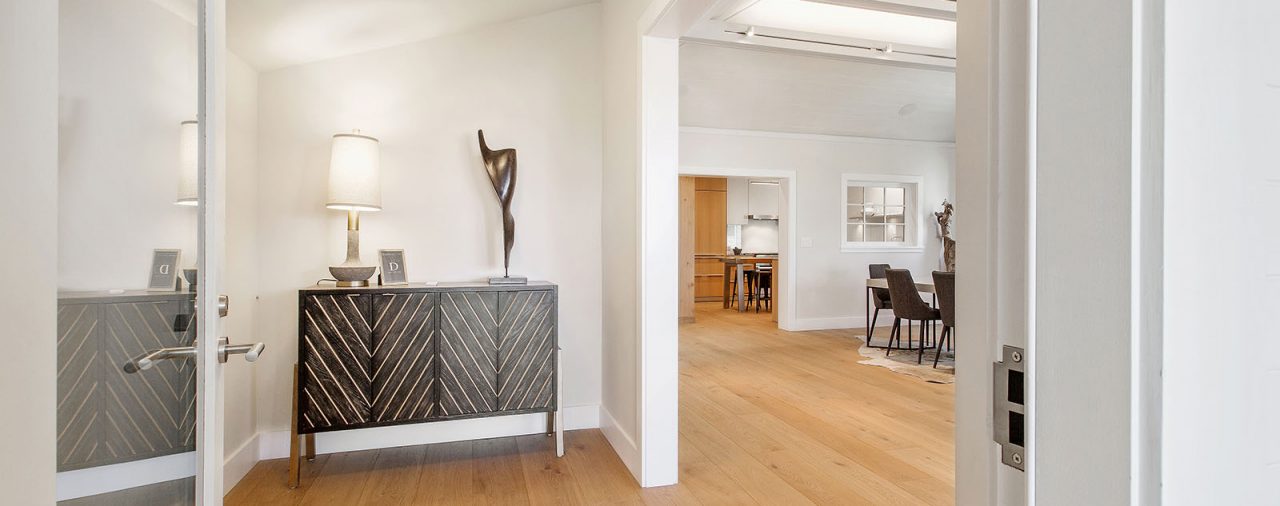
The Benefits of Home Staging – An Interview With Gail Dunnett
Article by The Bamberger Group
Selling a property in New York City can be a daunting task. When it comes to navigating the current real estate climate and learning to appeal to potential buyers, there are plenty of steps that must be taken in order to sell effectively. Staging can give a home the added edge it needs to increase offers and fetch a desirable purchase price, but it’s also a relatively small step in the long road to closing. Does investing in home staging truly yield a significant change in selling a property? Is there any way for homeowners with limited budgets to dramatically change how their home is perceived? And is it possible to decorate with pieces that appeal to a wide demographic, but still allow the space to stand out and be unique?
In this edition of Bamberger Answers, Studio D’s founder and industry veteran Gail Stempel Dunnet shares her insights on all these factors, and more.
Studio D’s founder, Gail Stempel Dunnett has over twenty years experience in the home furnishings and design industry. She melded her passion for interiors with her entrepreneurial business bug in 2003 when founding studio D in San Francisco, then acquiring NY Home Staging company in early 2011, which she plans to parlay into a national staging company opening in major metropolitan cities.Studio D has since staged premier NY properties including Anderson Cooper ‘s Penthouse and Katy Perry’s loft. Studio D has appeared on HGTV’s Selling NY and BRAVO’s curb appeal, as well as in the New York Times and Wall Street Journal’s house of the week.
[The Bamberger Group] To start, could you tell us about your experience in Connecticut as a home owner, when you first noticed how staging led to a rapid shift in interest from buyers?
[Gail Stempel Dunnett] I think that place was sitting on the market for at least seven months, and then once it was furnished we had multiple offers within a month. So that was my first real experience with it and living proof. I didn’t even know what staging was at the time, and now here I am with a staging company – I get it now because I lived it. when I started the business in California, we came across some research that was done by a large, national home staging company that researched two thousand different homes and compared the empty homes versus the staged homes. And they found that staged homes would get 10-15% higher selling price than an empty home and it would sell in half the time. So, there are hard cash and statistics regarding what you can actually feel when you walk into an empty space versus a staged one. We just did a penthouse in New York where the developer mentioned how it was easier to walk into a staged space and “get it” because it’s hard for people to see and visualize an empty space. By staging it, you’re creating a lifestyle that people can relate to a lot more than some walls, ceiling, and windows. One of the issues concerning developers is that staging is the very last step, the icing on the cake, and sometimes they’ve invested so much money, effort and time into the property that they’re at the end of the line. But while staging is a small percentage in the whole grand scheme of things, it attributes so much to the selling of the property that it’s really valuable. Our line is, at least connect on the investment. If you have a million dollar place and you’re getting 10% more on that, so you’re getting $100,000 more because it’s staged and it cost you $10,000-20,000 to stage, that’s a good return on investment. It talks to the people who understand the numbers, as well as those who understand the visual and emotional side of things.
[TBG] You have a very unique service that you offer – could you explain your creative and technical process? Do you own the furniture and set pieces you use to stage, or do you rent them out? How much of your team’s labor is spent on creative energy, and how much on logistics in obtaining the right materials from the right vendors?
[GSD] Very early on, we started with renting. It didn’t work because we couldn’t get the pieces we wanted, and therefore couldn’t create the look we wanted. We began buying all our own inventory so that we could get what we want when we wanted it with a financial [framework] that worked. The people who stage for us must be both right and left brained, in that they have to be creative, but also meet deadlines and deliverables. This business is highly organizational and operational, so we are very careful to get the people who can be creative but also have great customer service, follow-up, and relationship building deliverable. Organization is essential because there are deadlines buy authentic levitra with photoshoots and getting on the market, especially at the level and price point that we’re staging at. It is important for us to work with people we can trust and rely on, but who are also creative and talented. Those are the people that thrive because they’re very autonomous, but also have the flexibility to use their talents in accordance with their creative vision.
[TBG] Is there a “safe zone” common denominator to taste, and if so, is it your responsibility as a stager and marketer to use an inoffensive or generic style so you don’t risk turning off potential buyers? Conversely, do you find that making bold design choices is in fact more rewarding and benefits your clients in the long run?
[GSD] The three words we use to describe what we do are sophisticated, thoughtful, and bold. We want to be bold, but not offensive, and we want to be memorable, but not over the top. We don’t want to be boring and vanilla because it is important to be interesting. There are designers who do the same recognizable style with little to no variation, but we try and customize the design and the look to the space. It’s important for us to be unique and stand out, and in that regard we try to be different, explore new styles, and aim for pieces that will make the place memorable.

One of Studio D’s stagings in Tribeca. This apartment sold in less than half the time and for $120,000 more than a larger unit on a higher floor in the same building. View more details on this success story here.
[TBG] Do you pay attention to what’s hip in any given season? How do you balance what is trendy versus what is classically attractive and fashionable?
[GSD] We’re inspired by fashion, furniture, and design that are classic but up-to-date, so we’re constantly looking and frequenting furniture shows to see the latest looks. We’re passionate about what we do, so it comes naturally. We don’t want to get bored, so we keep it fresh and vary the styles. We’re always at the front of things because in many instances, after you use a piece a couple of times, you want something new, so that is inherent in the frame of mind, fortunately or unfortunately.
[TBG] And that sort of restlessness is part of the job, isn’t it? Always moving on to the next look?
[GSD] A little bit, which is good. It’s good for the clients, or else you risk becoming stale.
[TBG] What are your thoughts on the rising popularity of virtual staging? Do you consider this to be a potential threat to your business model, or do you consider yourselves to be a different category?
[GSD] We’ve looked for expansion into virtual staging, but decided to stick to our knitting and do what we do best. I believe virtual staging is great for photographers, architects, and developers, but if you actually bring people into the space and it’s empty, there won’t be as much impact as a furnished one. I think it makes sense to do both, with virtual staging being particularly useful if you want to pre-sell a building and show what it would look like, but it makes a huge difference to furnish it once people begin showing up and doing their walkthroughs.
[TBG] What advice would you give to a homeowner with a very limited budget for staging? Are there any simple changes that could dramatically change the way a home is perceived?
[GSD] The thing is, you can do it at any price point because it’s really just [a matter of] scaling it back, and how you invest. If you’re someone with an empty place that wants to stage it, you can do it affordably with less expensive furniture and have it look nice, or use your own pieces and edit them. For those who use their own furniture, editing the design space and getting rid of items leads to the most dramatic changes. We love staging because we start with a blank canvas, and therefore we can create a cohesive look. The problem with many of the places that are already furnished is they lack that cohesion in their styling, because oftentimes the furniture on display is a collection accumulated from living in different places and results in a clutter of objects with contrasting designs. My advice would be to edit, declutter, and get rid of anything that’s jarring, especially in terms of color. Usually it’s color that leads to a dramatic change in the way people perceive a living space – you want to keep a neutral palette. Art is also important, and while it doesn’t need to be expensive, it should flow and be subtle with interest in textures, fabrics, and shapes. In this way, even with a restricted budget, you can tailor a space to be cohesive, but also interesting.


